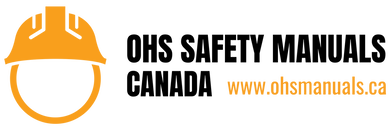|
Every employer in BC is now required by Worksafebc regulations to have a COVID-19 safety plan in place BC. This COVID-19 safety plan template BC must assess the risk of exposure at your workplace and must implement measures to keep your workers safe from exposure to the COVID-19 virus. Provincial occupational health and safety regulations across BC will have more stringent requirements for employers in the coming near future. Make your workplace as safe and healthy as possible for your employees and protect them against possible exposure to the Coronavirus COVID-19 with our ready to implement COVID-19 safety plan template.
WHAT IS COVID 19? Coronavirus disease (COVID-19) is an infectious disease caused by a newly discovered coronavirus around the world. Most people infected with the COVID-19 virus will experience mild to moderate respiratory illness and recover without requiring special treatment. Older people, and those with underlying medical problems like cardiovascular disease, diabetes, chronic respiratory disease, and cancer are more likely to develop serious illness or even death. To prevent and slow down transmission is to be well informed about the COVID-19 virus, the disease it causes and how it spreads. Protect yourself and others from infection by washing your hands or using an alcohol based rub frequently and not touching your face. The COVID-19 virus spreads primarily through droplets of saliva or discharge from the nose when an infected person coughs or sneezes, so it’s important that you also practice respiratory etiquette (for example, by coughing into a flexed elbow). WHERE CAN YOU PURCHASE A COVID 19 SAFETY PLAN TEMPLATE FOR BC? The following Coronavirus COVID-19 Safety Plan Template for BC has been professionally developed and designed by experienced OHS consultants and can be utilized by any business and in any city across BC and meets with all worksafebc provincial occupational hygiene regulation requirements in BC. This WorkSafeBC COVID-19 safety plan template is available for construction businesses, retail stores, grocery stores, office buildings, warehouses, restaurants, cafes, bars; across BC Vancouver Surrey Burnaby Abbotsford Victoria Delta Langley Richmond Maple Ridge Coquitlam Port Moody Abbotsford Chilliwack Mission Whistler Kelowna Kamloops. COVID 19 SAFETY PLAN TEMPLATE BC COVID 19 SAFETY PLAN BC CONSTRUCTION COVID 19 SAFETY PLAN TEMPLATE BC GUIDE TO REDUCING COVID 19 IN THE WORKPLACE Assess the risk at your workplace Employers must assess their workplaces in order to identify places where the risk of transmission is introduced. This process must involve frontline workers, supervisors, and joint health and safety committees and/or worker representatives. You should continue to assess the workplace after operations resume to ensure risks are identified and managed. The virus that causes COVID-19 spreads in several ways, including through droplets when a person coughs or sneezes, or from touching a contaminated surface before touching the face. To understand the risk at your workplace, consider the following questions: Where do people congregate, such as break rooms, production lines, or meeting rooms? What job tasks or processes require workers to come into close proximity with one another or members of the public? What tools, machinery, and equipment do people come into contact with in the course of their work? What surfaces are touched often, such as doorknobs, elevator buttons, light switches, equipment, and shared tools? Implement measures to reduce the risk You must select and put measures in place to minimize the risk of transmission. Maintaining physical distance Consider reducing the overall number of workers at the workplace at one time. This may be done by implementing work-from-home schedules or rescheduling some work tasks. Ensure that the appropriate number of people are in each area of a workplace to prevent workers from coming too close to one another or members of the public. This may be done by posting occupancy limits (e.g., on elevators, washrooms, and other small spaces), and limiting the number of workers at one time in break locations. Maintain a distance of 2 metres (6 feet) between workers and others wherever possible, by revising work schedules, organizing work tasks, and employing the use of dollies or other aids for work tasks that would typically be done by more than one person. Consider creating pods of workers who work together exclusively to minimize the risk of broad transmission throughout the workplace. Implement measures to ensure workers can maintain a distance of two metres when serving or working with or near members of the public. Where physical distance cannot be maintained Where distance cannot be maintained, consider separating people with partitions or plexiglass barriers. Where other measures are not sufficient, consider the use of masks, understanding that these have limitations. Cleaning and hygiene Provide adequate hand-washing facilities on site for all workers and ensure the location is visible and easily accessed. Develop policies around when workers must wash their hands, including upon arriving for work, before and after breaks, after handling cash or other materials, before and after handling common tools and equipment. Implement a cleaning protocol for all common areas and surfaces, including washrooms, equipment, tools, common tables, desks, light switches, and door handles. Ensure those engaged in cleaning have adequate training and materials. Remove any unnecessary tools or equipment that may elevate the risk of transmission, including items like coffee makers and shared utensils and plates. Develop policies Develop the necessary policies to manage your workplace, including policies around who can be at the workplace, how to address illness that arises at the workplace, and how workers can be kept safe in adjusted working conditions. Communicate these policies clearly to workers through training, signage, and reminders as required. You must develop and communicate policies prohibiting the following workers and others from entering the workplace: Anyone who has had symptoms of COVID-19 Anyone who has travelled outside of Canada within the last 14 days Anyone who has been identified by Public Health as a close contact of someone with COVID-19 Anyone who has been told to isolate by Public Health Prohibit or limit visitors. Have a plan around workers who may start to feel ill while at work, including who they should notify and how they will travel from the workplace to their home. Will you have workers working alone to reduce the risk of transmission? If so, you need to have procedures for these workers to ensure they are safe. If you will have employees working from home, you need to develop work from home procedures to ensure workers are working safely. Develop communication plans and training You must ensure that everyone entering the workplace, including workers from other employers, knows how to keep themselves safe while at your workplace. Be sure everyone is trained on the measures you have put in place and the policies around staying home when sick. Post signage, including occupancy limits and effective handwashing practices. Signage should also be posted at the main entrance indicating who is restricted from entering the premises (including visitors and workers with symptoms). Ensure supervisors have been trained on monitoring workers and workplace to ensure policies and procedures are being followed. Monitor your workplace and update your plans as needed Things may change as your business operates. If you identify a new area of concern, or if it seems like something isn’t working, take steps to update your policies and procedures. Involve workers in this process. Ensure that workers can raise safety concerns. This may be through a worker health and safety representative or a joint health and safety committee. Employers with fewer than 9 employees must also have a way for workers to raise health and safety concerns at the workplace. Work with these committees and workers to resolve any identified safety issues. Assess and address risks from resuming operations If your workplace has not been operating, there may be risks arising from restarting your business that you need to manage. Consider the following: Have you had any staff turnover, or are workers being required to change or adapt job roles, or to use new equipment? Consider training or new employee orientation. Will workers need time or training to refresh their skills after having been out of the workplace? Have you changed anything about the way you operate, such as the equipment you use or the products you create? Are there any processes required for start-up that might introduce risks? Consider the impact of restarting machinery, tools and equipment, or clearing systems and lines of product that may have been left when your business was closed.
3 Comments
SAFETY TRAINING BC BRITISH COLUMBIA VANCOUVER
Surrey, Burnaby, Richmond, New Westminster, Langley, Delta, Maple Ridge, Coquitlam, Port Moody, Pitt Meadows, White Rock, Mission, Chilliwack, Abbotsford, Whistler, Hope, Squamish, Sunshine Coast, Kelowna, Prince George, Kamloops, Victoria, Langford, Nanaimo, Vancouver Island In British Columbia, BC; employers are responsible for providing worker instruction and training under section 21 of the Workers Compensation Act. The Occupational Health and Safety (OHS) Regulation also requires mandatory worker education, training, and/or certification in many cases. Where specified in the Regulation, education, training, and certification must meet an acceptable training standard, or be provided by a person or agency acceptable to WorkSafeBC. WHY DO YOU NEED TO PROVIDE SAFETY TRAINING TO YOUR EMPLOYEES AND SUPERVISORS IN BC? Safety training for your employees and supervisors isn't just a good idea; but also the law in BC. WorkSafeBC regulations require that all employees and supervisors go through formal training in areas that pose a risk to their health and safety based on the job tasks. Adequate safety training helps workers understand their rights, gives an overview of specific job hazards to which they may be exposed and helps them to be able to protect against those hazards from injuries, sickness or death. Your employees should demonstrate and continue to demonstrate their understanding of the subject matter. Safety Training in BC also applies to managers, supervisors and business owner. For example, if a Supervisor is directing someone on how to operate a forklift safely but have never operated a forklift themselves, then how can they be deemed as a Supervisor? THE RIGHT TO KNOW One of the three rights all workers have in BC is the RIGHT TO KNOW. The right to know means that as an employee, you have the right to be informed by the employer of known or likely hazards in the workplace, and to be provided with the information, instructions, education, training, and supervision necessary to protect your health and safety. All employees, managers and supervisors in BC have the right to practice the Right to Know legal right and no employer, by law, can punish an employee for practicing this right in the workplace. WHO PROVIDES APPROVED SAFETY TRAINING IN BC? Currently in BC, the following classroom and online health and safety training providers are acceptable to government authorities: SAFETY TRAINING BC ONLINE SAFETY TRAINING BC SAFETY TRAINING BC TYPES OF TRAINING Safety training BC in the workplace can be provided to employees by either classroom sessions with an instructor or through online safety training. Employers in BC must document all training courses. Creating a training course matrix will help keep track of who has been trained, when they were trained, the training topic, and when it is time for refresher training. Employees must also sign an official sign-in sheet provided by the employer that can serve as proof that employees received proper safety training. The sign in sheet must have a broad description of what is being covered in the training. Tests or quizzes on the presented material can help gauge employee understanding of the material and highlight topics that need to be reviewed. Training in the workplace must also be provided in the language that is most commonly spoken by the employees. An effective safety training program can reduce the number of injuries, sicknesses and deaths, property damage, legal liability, illnesses, workers' compensation claims, and missed time from work. An effective safety training program can also help a trainer keep the required WorkSafeBC-mandated safety training courses organized and up-to-date. Safety training classes help establish a safety culture in which employees themselves help promote proper safety procedures while on the job. It is important that new employees be properly trained and embrace the importance of workplace safety as it is easy for seasoned workers to negatively influence the new hires. YOUNG WORKERS Workers of all ages can be injured at work, but young and new workers may be more at risk. Injuries, illnesses and death can result from inadequate training, orientation, and supervision; inexperience; and lack of awareness of workplace rights and responsibilities. The WorkSafeBC Regulations defines a "young worker" as any worker under age 25. A "new worker" can be any age and includes those who are new to the workplace or location, or facing new hazards. Typical reasons why young and new workers are injured, deemed sick or killed in the workplace include:
WHAT TRAINING IS MANDATORY IN BC FOR EMPLOYEES? The following safety training in BC is mandatory for all employees and supervisors regardless of your industry: Employee Safety Orientations First Aid Training WHMIS 2015 Bullying and Harassment Sexual Harassment Incident Investigations Workplace Inspections Joint Health and Safety Committee Training BC (20 or more employees) Bloodborne Pathogens and COVID 19 Supervisor Due Diligence And then depending on your industry, the following construction safety training courses may also apply to your business: Confined Space Entry Lockout Tagout Asbestos Awareness Training Fall Protection Traffic Control Aerial Lifts Skid Steers |
AuthorOHS2GO.com ArchivesCategories |
|
SERVICES
OHS2GO.com provides quality and affordable industry specific occupational health and safety manual templates for all businesses in BC, Alberta, Ontario, Saskatchewan and Manitoba. |
CUSTOMER SERVICE
For customer inquiries or questions about ordering products and training CALL US TOLL FREE CANADA: 1-888-232-0322 EMAIL US: [email protected] |
HOURS
Our online ordering portal is open 24/7. Order anytime. Customer Service: 8:30 am – 6:00 pm PST Monday to Friday Customer Service: 9:00 pm – 2:00 pm PST Saturday Closed Sunday & National Holidays |




 RSS Feed
RSS Feed


